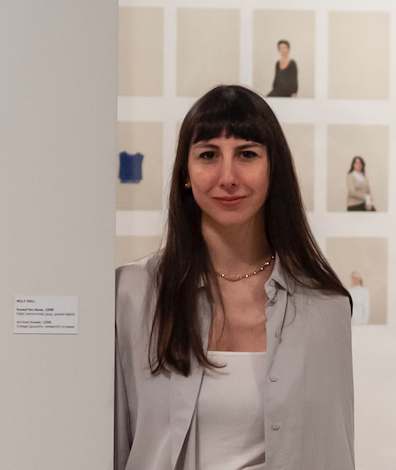Ulya Soley

In 2022, 41 contemporary art curators, researchers, and museum directors from 24 different countries were awarded to attend the CIMAM 2022 Annual Conference. The CIMAM 2022 Annual Conference, titled "The Attentive Museum. Permeable Practices for a Common Ground", was held in Mallorca (Balearic Islands), Spain on 11–13 November, hosted by Es Baluard Museu d'Art Contemporani de Palma.
Ulya Soley's Conference Report
My report on the CIMAM 2022 Annual Conference titled “The Attentive Museum: Permeable Practices for a Common Ground”, will paint a picture of the conference through some important questions raised by the speakers and the participants.
The conference began with a provocative and very timely question raised by Bart de Baere “Are contemporary art museums, museums?” at the Es Baluard Museu d'Art Contemporani de Palma. As we came together to discuss how an attentive museum should be wired, we began by discussing whether contemporary art museums today were in line with how museums are defined. This question stayed with me during the three days of the conference where we repeatedly went back to redefining the ways in which we function at museums and how we could initiate change from the inside.
The second day of the conference titled “Unlocking History and New Narratives” took place at Casa Esment, which was a space that made a statement of putting the human at the center, and underlined the importance of love, care, and attention to detail. Denise Ferreira da Silva’s talk “After It’s All Said” was inspiring since she left the audience with many important questions to think about. One of these questions was “How to visit an exhibition without being a connoisseur”. Perhaps we need disorientation, in order to change the way contemporary art is perceived. For me, the word “disorientation” was a keyword to take home, something to break away from the conventional ways of seeing, something to finally help change the way we make exhibitions.
Another important question was raised by Clémentine Deliss, which followed as “How can a museum be talked about beyond its last exhibition, last event, or last budget cut?” Deliss suggested that the public is shifting from consumer to student, offering a completely new way of thinking about museums. Although I wasn’t convinced by this revolutionary take on how an exhibition space should be used, I agreed with her final statement which also provides a thought that all conference speakers and participants seemed to agree upon: “To enter a museum no exam is necessary.” Later, the preservation and permanence relationship was discussed, since these notions seemed to contradict the ideal performative, ephemeral, and quick-to-respond nature of contemporary art museums.
The last day of the conference brought together perspectives from Ukraine, Spain, Egypt, and India under the title “Learning from the Community: Collective Actions in the Face of Emergency”. While I was listening to the final panel discussion, a bomb exploded in Istanbul, very close to my apartment as well as to the museum I work at. The incident is currently regarded as a terrorist attack, and it was a harsh reminder of how urgent it is to discuss collective actions in the face of an emergency. The performance in Es Baluard by Juana Gomila and Daniel Andujar, titled “Letter of Marque” was a great way to end the three-day conference because it told a story of many cultures, civilizations, and religions “that were kidnapped, forced, shipped to unknown lands or sold into slavery.”
It was evident at the beginning of this conference that we all wanted change. However, after listening to thought-provoking presentations and talking among ourselves, it became clearer that current strategies of exhibition-making and the structuring of the museums were not working in the face of current conflicts and we needed something more revolutionary. I would like to conclude my report with a quote from de Baere’s opening speech: “Let us not be wolves because this is not wall street, and art is not hierarchical.”